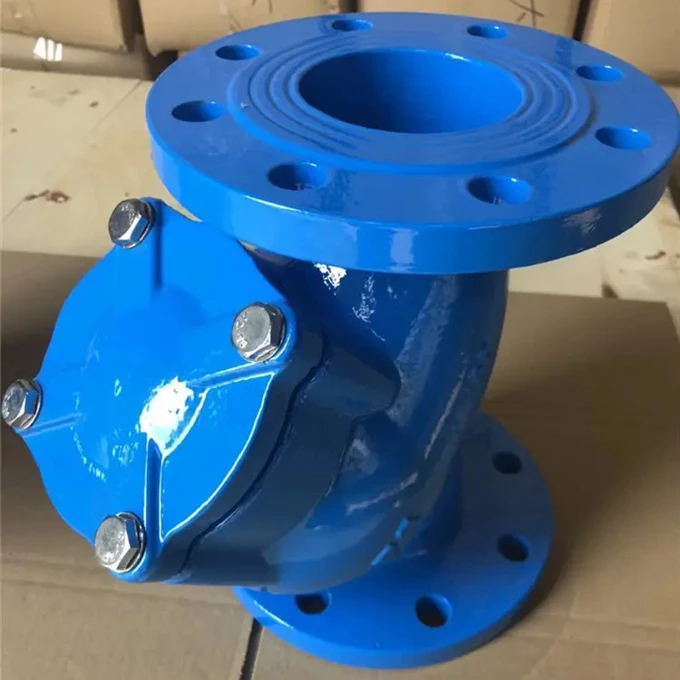1 月 . 20, 2025 03:28 Back to list
Y Type Strainer
Exploring the diverse world of strainers unveils a fascinating array of products, each catering to specific needs and functions. Strainers, often an overlooked component in many industries, serve crucial roles that enhance efficiency and ensure safety in both domestic and industrial settings. This guide delves into the various types of strainers, highlighting their unique features and applications to aid in understanding their importance and selection.
Duplex Strainers represent an advanced option, featuring dual chambers that allow for continuous operation while one chamber is being cleaned. This design eliminates the need to halt operations during maintenance, making duplex strainers ideal for critical process applications that cannot afford downtime. Industries like oil and gas, petrochemical, and water treatment heavily rely on duplex strainers for this uninterrupted flow advantage. Wedge Wire Strainers stand out for their robustness and precision in filtering, often employed in harsh industrial environments. With a design comprising of wedge-shaped wires, these strainers provide a consistent and sturdy barrier against particulates. They are particularly useful in high-pressure situations where fine filtration is required, such as in chemical processing and mineral processing industries. Conical Strainers are simple yet effective solutions for temporary filtration needs. Their conical shape is inserted directly into a pipeline to catch debris during system start-ups. They are often used in conjunction with more permanent straining solutions to ensure initial cleanliness before more sensitive equipment comes online. Understanding the intricacies of each strainer type enhances decision-making in both purchasing and application, providing a deeper grasp of how each product can specifically meet different needs. Whether it is the high tolerance of a wire mesh strainer or the uninterrupted service of a duplex strainer, selecting the right type can drastically improve system efficiency and longevity. When choosing a strainer, factors such as the nature of the fluid, the size of particles needing removal, system pressure, and the required flow rate must all be carefully considered to match the strainer to the application's demands accurately. Investing time in understanding these factors aligns with the broader goals of functional optimization and cost reduction, providing a substantial return through safeguarded equipment and seamless operations. As industries continue to evolve, the role of strainers remains pivotal, underscoring their importance in achieving operational excellence through precision and reliability.


Duplex Strainers represent an advanced option, featuring dual chambers that allow for continuous operation while one chamber is being cleaned. This design eliminates the need to halt operations during maintenance, making duplex strainers ideal for critical process applications that cannot afford downtime. Industries like oil and gas, petrochemical, and water treatment heavily rely on duplex strainers for this uninterrupted flow advantage. Wedge Wire Strainers stand out for their robustness and precision in filtering, often employed in harsh industrial environments. With a design comprising of wedge-shaped wires, these strainers provide a consistent and sturdy barrier against particulates. They are particularly useful in high-pressure situations where fine filtration is required, such as in chemical processing and mineral processing industries. Conical Strainers are simple yet effective solutions for temporary filtration needs. Their conical shape is inserted directly into a pipeline to catch debris during system start-ups. They are often used in conjunction with more permanent straining solutions to ensure initial cleanliness before more sensitive equipment comes online. Understanding the intricacies of each strainer type enhances decision-making in both purchasing and application, providing a deeper grasp of how each product can specifically meet different needs. Whether it is the high tolerance of a wire mesh strainer or the uninterrupted service of a duplex strainer, selecting the right type can drastically improve system efficiency and longevity. When choosing a strainer, factors such as the nature of the fluid, the size of particles needing removal, system pressure, and the required flow rate must all be carefully considered to match the strainer to the application's demands accurately. Investing time in understanding these factors aligns with the broader goals of functional optimization and cost reduction, providing a substantial return through safeguarded equipment and seamless operations. As industries continue to evolve, the role of strainers remains pivotal, underscoring their importance in achieving operational excellence through precision and reliability.
Next:
Latest news
-
Y Type Strainers: A Comprehensive GuideNewsOct.18,2024
-
Understanding Water Valve Options for Your NeedsNewsOct.18,2024
-
Functions and TypesNewsOct.18,2024
-
An Essential Component for Fluid SystemsNewsOct.18,2024
-
Adjustment and ReplacementNewsOct.18,2024
-
Slow Closing Check Valves: A Key Component in Fluid SystemsNewsOct.08,2024
Related PRODUCTS









